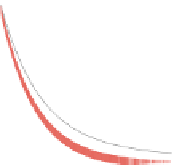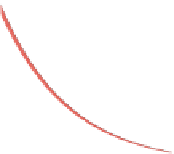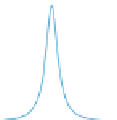Biomedical Engineering Reference
In-Depth Information
a
b
1
2.8 ps
-1
2 ps
-1
1 ps
-1
0
c
d
1
1 ps
-1
2 ps
-1
2.8 ps
-1
1 ps
-1
2 ps
-1
2.8 ps
-1
0
0
0.2
0.4
-3.03
-3
-2.97
2.97
3
3.03
t
[ns]
[ps
-1
]
ω
Fig. 9.18
Left panels
: envelope of the optical beats for two coupled QDs emitting to a common
reservoir and to separate reservoirs. For each value of
Δ
/
h
shown in the plot, the coupling
V
is
6ps
−
1
in each case.
Right panels
: the corresponding absorption spectra. Plots
(
a
)and(
b
) show the properties of a DQD emitting to a common reservoir, while plots (
c
)and(
d
)
correspond to two dots emitting to separate reservoirs.
Black lines
in (
a
)and(
c
) show exponential
decay curves with the rates
adjusted so that
E
=
Γ
/
2and
Γ
, while in (
b
)and(
d
) they show Lorentzians of equal weight
and width
Γ
/
2[
124
]
separated reservoirs. In both cases the increase of the coupling (and decrease of
Δ
) induces a similar transfer of line weight from one line to the other, but the way
the line shape changes is substantially different for the two types of interaction.
In the case of independent reservoirs, only the line amplitude changes while the
width of the two Lorentzians remains constant. If the dots interact with common
electromagnetic field, then the line amplitudes change only slightly, but the shape
of the two components allows to distinguish the subradiant factor for which the
width of the Lorentzian decreases with increasing coupling and the superradiant
factor for which the width increases while the energy mismatch tends to zero. It is
interesting to note that since the weight of each line behaves almost in the same way
in both cases no difference can be observed if the absorption spectrum is averaged
over an inhomogeneous ensemble of DQDs for which the transition energies are
distributed on the wider interval than the width of a single line. The static dipole
interaction which induces the biexcitonic shift is relevant only for third and higher
order contributions to the optical response of collectively coupled dots. It leads to the
biexcitonic beats which show two-rate decay in the intermediate range of parameters
(
Δ
∼
Γ
h
) which becomes dominated by the superradiant component in the limit of
Δ
→
0[
124
].














































































































































































